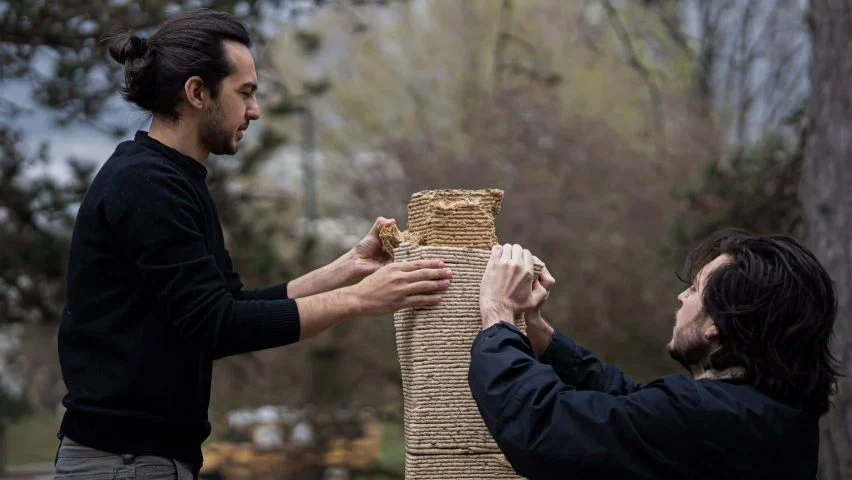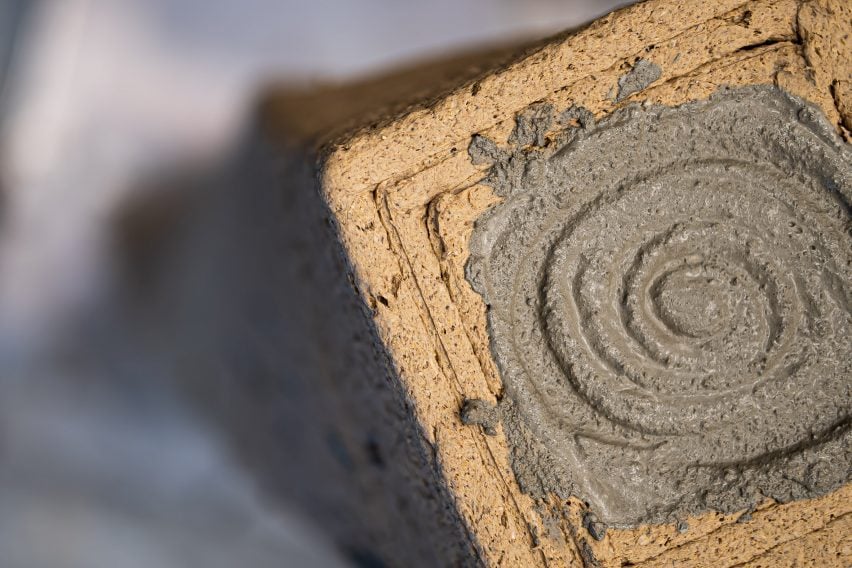DART Lab Uses Sawdust To Manufacture Biodegradable Concrete Casts
The Digital Architecture Research and Technologies or DART Lab uses sawdust to manufacture biodegradable concrete casts. In an effort to reduce the amount of wood that is wasted during the process of pouring concrete, a group of researchers from the University of Michigan have developed biodegradable formwork made out of sawdust.
Author:George EvansAug 02, 202311.7K Shares334.4K Views

The Digital Architecture Research and Technologies or DART Lab uses sawdustto manufacture biodegradable concrete casts. In an effort to reduce the amount of wood that is wasted during the process of pouring concrete, a group of researchers from the University of Michigan have developed biodegradable formwork made out of sawdust.
The DART Lab at Taubman College of Architecture and Urban Planningis responsible for the BioMatters project, which resulted in the creation of the wood-based substance.
The team, which was directed by Mania Aghaei Meibodi and included academics Muhammad Dayyem Khan and Tharanesh Varadharajan, aimed to develop a material that could reuse industrial sawdust in order to reduce the amount of trash produced by formwork that is used in the construction of concrete structures.
In order to produce their material, the researchers combined sawdust with biopolymers and additives. This resulted in a substance that can be molded into a variety of forms or printed using 3D technology. The group utilized the material to make concrete formwork so that they could show the possibilities of the product.
The group used a 3D printer to create a structural column of 1.8 meters in height, and then poured concrete into its center in stages. The column was exposed by peeling away the sawdust formwork after the concrete had had sufficient time to harden.
After that, the sawdust material was kept and recycled by adding water in order to reproduce the needed degree of viscosity for 3D printing. The group was able to successfully reuse the same material more than 25 times in order to construct extra columns by following this approach.
The team estimates that 15 billion trees are felled every year throughout the globe, which results in three million pounds of sawdust being deposited into landfills in the United States. It is possible that the sawdust will be burnt as an alternative method, which might lead to contamination of the environment.
“„It's like a precious material for me because you're cutting down a tree. I think every particle of that tree should be reused if you're cutting it down.- Muhammad Dayyem Khan
The DART Lab estimates that formwork accounts for up to forty percent of the costs associated with the building of concrete structures. Typically, formwork is made out of wood. Formwork is often thrown away when it has served its purpose on a building site.
The team also plans to experiment with making larger structures with the material.
“„For example, some structures can be printed in a big warehouse and then you just turn them back up. Just rotate them 90 degrees and you've got a bigger structure.- Muhammad Dayyem Khan
Final Words
Although the original experiments with the material were conducted by the BioMatters team to use it as formwork, the results revealed that its potential applications go beyond merely concrete building.
“„It can be anything. It can be small, decorative items. It can be furniture. It can be your walls, doors, windows.- Muhammad Dayyem Khan
In addition, the material may be sanded and stained in a manner analogous to that used for wood in order to get a smoother finish. The group has not yet investigated which types of wood work the best with the material.
Jump to

George Evans
Author
George Anderson, an exceptional architectural designer, envisions and brings to life structures that transcend the realm of imagination. With an unwavering passion for design and an innate eye for detail, George seamlessly blends form and function, creating immersive spaces that inspire awe.
Driven by a deep appreciation for the interplay of space, light, and materials, George's innovative approach redefines the possibilities of architectural design. His visionary compositions leave an indelible mark, evoking a sense of wonder and transforming the built environment.
George Anderson's transformative designs and unwavering dedication continue to shape the architectural landscape, pushing the boundaries of what is possible and inspiring generations to come.
Latest Articles
Popular Articles
